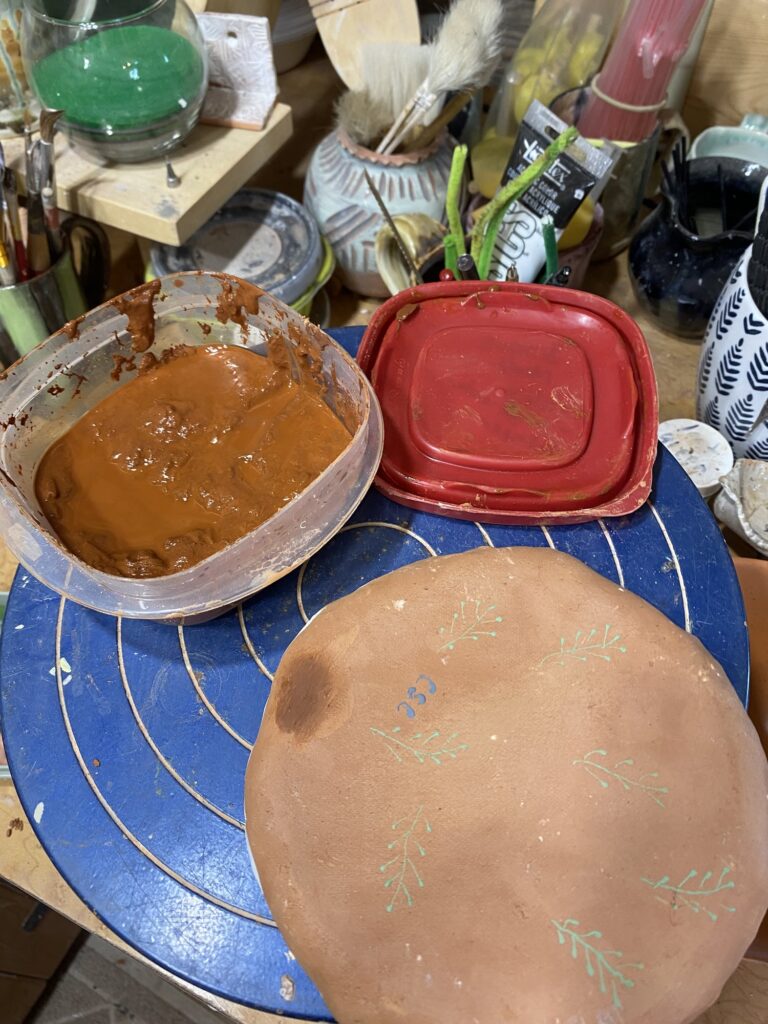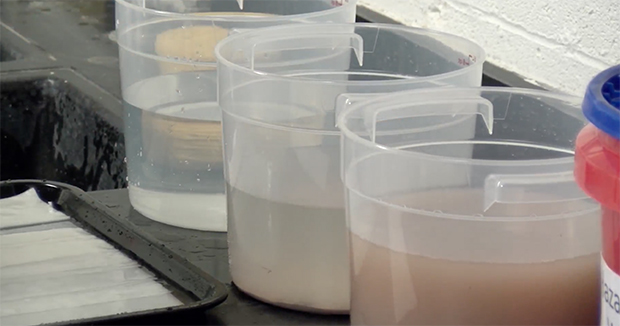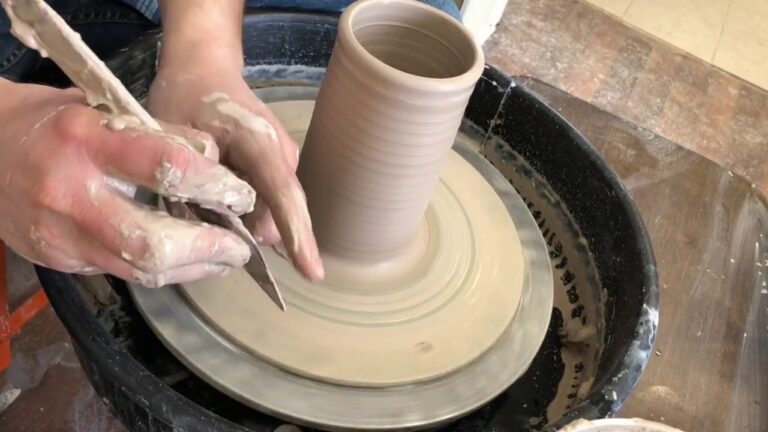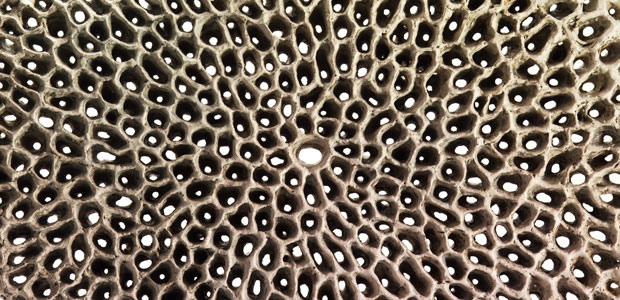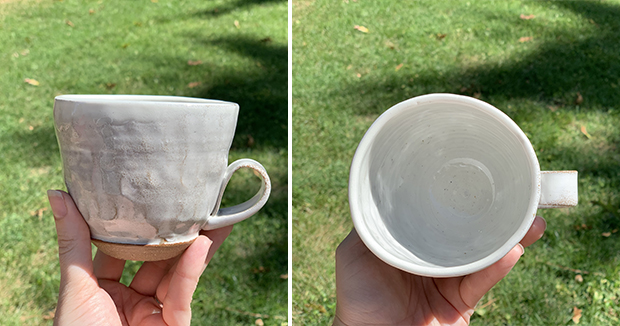
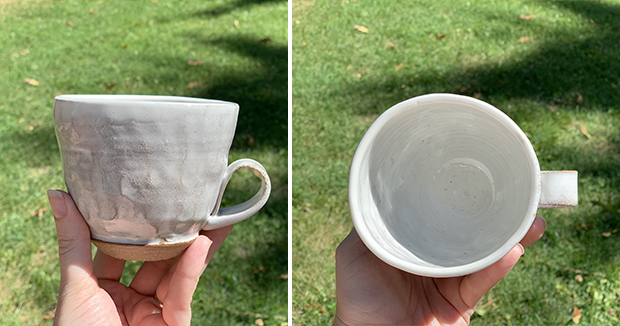
All potters learn early on in their careers that clay has a memory. Clay memory, or clay particle orientation that is affixed by physical/ionic properties, is what can cause ceramic warping. This is because the clay particles tend to return to their initial orientation when they begin to dry out.
In today’s post, an excerpt from the Ceramics Monthly archive, Thomas Anderson explains how to predict and manage ceramic warping prior to firing your work. – Jennifer Poellot Harnetty, editor
Knowing what causes memory is one thing, knowing how to minimize its effect is another. The first issue to understand is that high-plasticity clays often have high memory. Porcelain is more prone to memory issues, but any highly plastic clay body is susceptible. The second issue is water. The more water you add to a body during forming, the more you increase the likelihood of memory issues.
The heavy slip that comes up when you throw indicates you are washing out fine particle plasticizers on the inner and outer wall, which in turn softens them and changes the ionic charge they carry. You have created differentials in surface tension, ionic charges, and particle alignment between the inner cavity and outer walls.

Another memory factor to consider is uniformity of the formed piece. Does this piece have uniform wall thickness, and/or do the attachments such as handles or other ornate additions have the same thickness? While ornate features make a piece attractive,
they can also create drying issues including warping. Obviously thin walls will dry faster than thick walls, which is multiplied if they are very thick or very thin. Thick or weighty attachments made to thin walls can amplify the effects of memory.
Damp boxes and plastic are used to help facilitate an even clay drying process. Wrapping work in plastic requires monitoring and judgments to be made as to when to remove the plastic. Light misting can also slow down drying of thin-walled areas, but care is required not to over saturate the clay with water. Sponging should be avoided as it will unevenly
moisten a piece as well as remove fine particles and erase detailing.
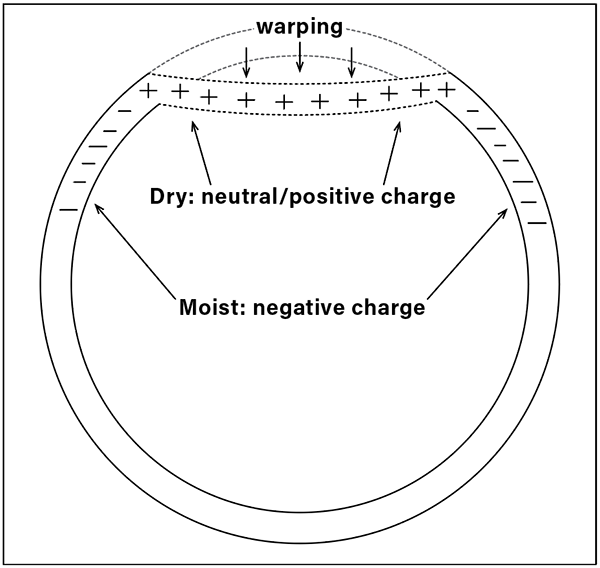
Slab and tile work are the most susceptible to warping caused by memory. Prevention begins when rolling slabs. Roll in multiple directions—not just one. Smaller pieces can be flipped half way through the process. Large slabs formed on a slab roller should be rolled in both directions, forward then backward. Rolling in one direction stretches the slab as much as it compresses the slab. Unequal compression can add to memory issues, and cause the slab to be more susceptible to quartz inversion stress when firing. Cut pieces from the center of the slab and avoid the outer 2 inches around the perimeter if possible.
The preferred method for handling ceramic tiles after being rolled is storage on drywall ware boards. While this method works, I prefer to use 1/2-inch Sande plywood, which absorbs and releases moisture at a slower rate and does not flex when lifted. I roll and cut tile on the plywood to avoid any additional handling of the clay. Placing a second piece of plywood over the tile adds just enough weight to lightly compress the tiles and helps prevent warping. Tiles and slabs will shrink while drying, so use enough weight to hold them flat, but not so much you create drag as they dry. Memory is a clay property that you have to manage as part of your forming process.
To control warping caused by memory issues, you primarily have to control the rate of drying. In addition, moisture content must remain uniform across the entire piece, whether it be a large bowl or a flat tile. Small, thin-walled bowls and cups are popular, but thin-walled pieces are susceptible to memory issues. Thin walls are less resistant to the stress and pull. For example: thin tiles warp more than thick tiles due to the dispersion of stress. Thin attachments to thicker pieces are also susceptible to memory issues.
The shrinkage rate supplied by your clay supplier should also be considered. Highly plastic bodies have higher levels of plasticizers, which mean higher water content. Shrinkage rates above 12.5–13% indicate high plasticity, making those bodies more susceptible to warping due to memory. For slab or tile work, keep the shrinkage rates to 12% or under.
The Author: Thomas Anderson has spent the last decade researching technical papers from various universities on clay formulation. He is currently writing formula limits for clay chemistry.

